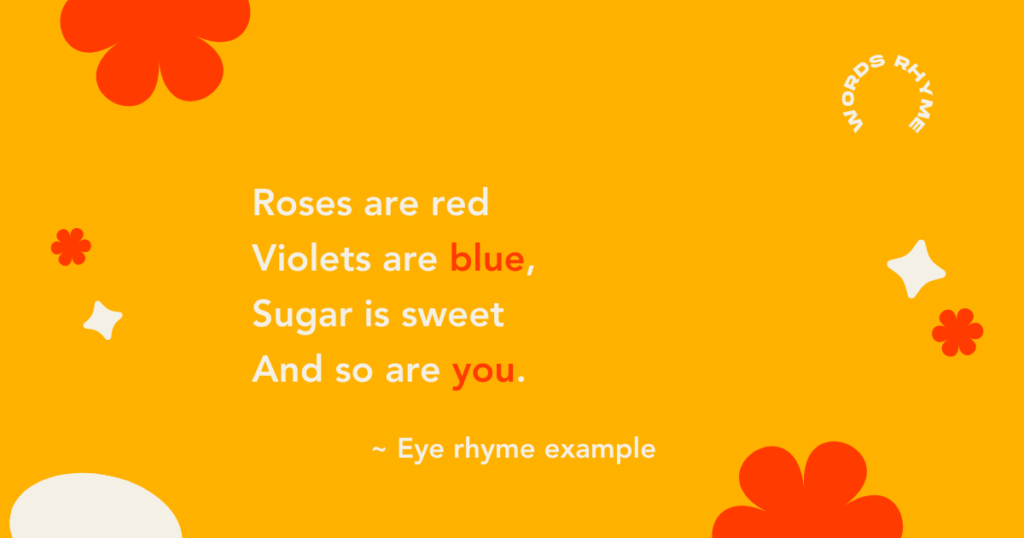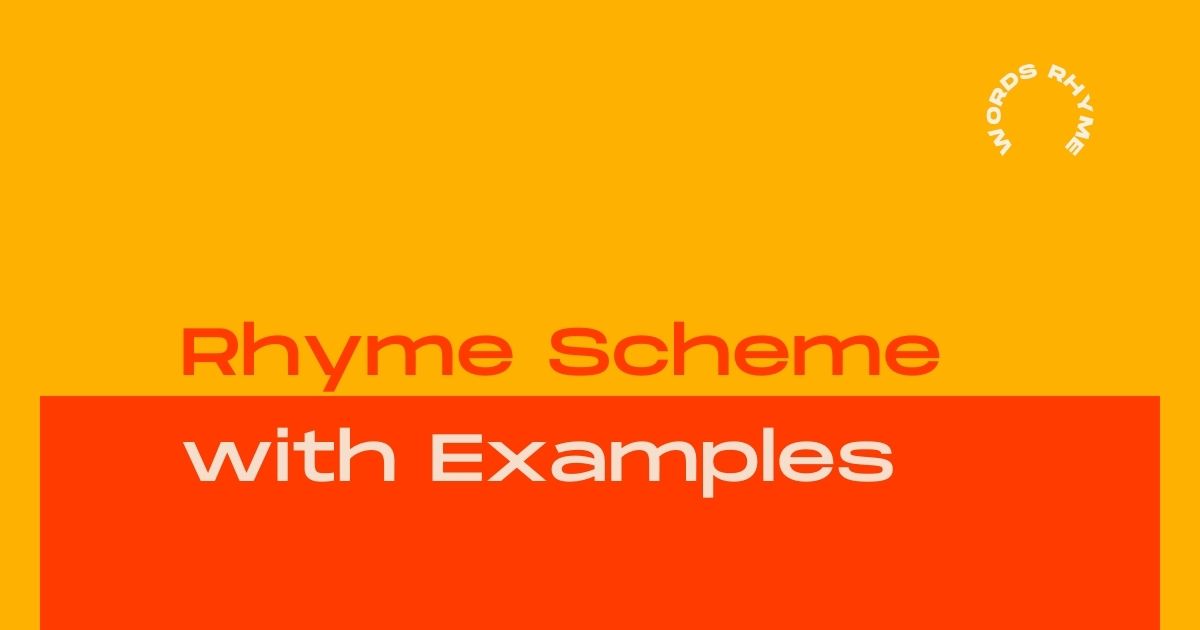Behind every great piece of poetry lies an underlying structure that governs the sound relationships between lines. Known as the rhyme scheme, it provides the framework upon which the poet crafts their lyrical masterpiece.
Today, we will explore common rhyme schemes with examples in literature to see how authors from the past have cleverly come up with evergreen masterpieces.
Table of Contents
How to Identify Rhyme Scheme
Identifying the rhyme scheme in a poem can seem daunting, but it’s actually a quite fun and rewarding exercise! Here’s a breakdown of the steps to follow:
- Read the poem aloud. Hearing the rhyming sounds will make the pattern clearer. Recite it repeatedly if needed.
- Note where rhyming words occur. Look at the ends of lines and mark words that have similar sounds (eg. play, stay).
- Assign rhyming words letter codes. Common conventions are a, b, c etc. So similar-sounding words get the same letter.
- Draw out the rhyme pattern. Write out the stanza with letters below each line indicating its rhyme. (Eg. ABAB)
- Analyze repeated patterns between stanzas. Many poems maintain the same rhyme scheme throughout.
- Check for variations. Some poems have subtle tweaks to the basic pattern between stanzas.
- Consider eye rhymes. Near rhymes at the end of lines (eg. play, clay) may be deliberate.
- Note breaks from the pattern. Occasional non-rhyming lines can be part of the structure.
- Research the poem’s form if needed. The rhyme scheme may reveal clues to its genre/structure.
- Discuss ambiguities. If uncertain, get input from other readers on the rhyme analysis.
Rhyme Schemes with Examples
1. Couplet Rhyme Example
‘Is there anybody there?’ said the Traveler,
Knocking on the moonlit door;
And his horse in the silence champed the grasses
Of the forest’s ferny floor.And a bird flew up out of the turret,
The Listeners – Walter De La Mare
Above the Traveller’s head:
And he smote upon the door again a second time;
‘Is there anybody there?’ he said.
In this 4 line stanza, the rhyme scheme follows the pattern of AABB.
The first and second lines rhyme with the words “door” and “floor”, representing the A rhyme.
The third and fourth lines then rhyme with each other using the words “head” and “said”, making them the B rhyme.
2. Alternating Rhyme Example
Shall I compare thee to a summer’s day?
Sonnet 18 – William Shakespeare
Thou art more lovely and more temperate:
Rough winds do shake the darling buds of May,
And summer’s lease hath all too short a date.

In this quatrain, the rhyme scheme follows the pattern of ABAB.
The first line (“day”) rhymes with the third line (“May”), representing the A rhyme.
The second line (“temperate”) then provides the B rhyme, rhyming internally within the quartet.
The last line (“date”) completes the ABAB pattern by rhyming with the first A sound of “day”.
3. Enclosed Rhyme Example
Bent double, like old beggars under sacks,
Dulce Et Decorum Est – Wilfred Owen
Knock-kneed, coughing like hags, we cursed through sludge,
Till on the haunting flares we turned our backs
And towards our distant rest began to trudge.
Dulce et decorum est is derived from a verse written by the Roman poet Horace: Dulce et decorum est pro patria mori, meaning “it is sweet and fitting to die for one’s country”.
In this quatrain, this rhyme scheme example follows the pattern of ABBA.
The first line (“sacks”) rhymes internally with the third line (“backs”), representing the enclosed or bookend A rhyme.
The second line (“sludge”) provides the internal B rhyme.
The last line (“trudge”) then completes the ABBA pattern by rhyming with the first A sound of “sacks”.
4. Triplet Rhyme Example
She left the web, she left the loom,
The Lady of Shalott – Alfred Lord Tennyson
She made three paces thro’ the room,
She saw the water-lily bloom,
In this brief, three-line encounter from Tennyson’s classic poem, the rhythm is as refined as the lady’s loom. The stanza wastes not a syllable in advancing the narrative thread.
The opening line rings out its final syllable like the toll of a bell, with “loom” ushering in the introductory rhyme.
Sure enough, on the very next line our expectations are met, as “room” echoes back the original sound. The perfect unity of the triplet’s construction becomes clear with the final rhyme “bloom”.
5. Slant Rhyme Example
Because I could not stop for Death –
He kindly stopped for me –
The Carriage held but just Ourselves –And Immortality.We slowly drove – He knew no haste
Because I could not stop for Death – Emily Dickinson
And I had put away
My labor and my leisure too,
For His Civility –
Dickinson employs slant rhymes rather than perfect rhymes in this excerpt:
She pairs “me” with “Immortality” and “haste” with “Civility”. These pairs don’t rhyme perfectly, but they have similar sounds, creating a subtle and sophisticated effect.
6. Internal Rhyme Example
The fair breeze blew, the white foam flew,
The Rime of the Ancient Mariner – Samuel Taylor Coleridge
The furrow follow’d free;
We were the first that ever burst
Into that silent sea.
A melody within, where rhymes bloom within a single line, adding sweetness and surprise. In this excerpt, we can see that in the first line, “blew” and “flew” rhyme.
The third line also bursts with internal rhyme with “first” and “burst”.
The author adds a cherry on top by adding the end rhyme “free” and “sea”.
More Rhyme Schemes with Examples
7. Half rhyme (or imperfect rhyme) – words that almost rhyme:
“Who has seen the wind? Neither I nor you:
But when the leaves hang trembling, the wind is passing through.” (Christina Rossetti)
8. Eye rhyme – words that look like they rhyme but don’t sound the same:
“Roses are red
Violets are blue,
Sugar is sweet
And so are you.” (Old nursery rhyme)

9. Masculine rhyme – a stressed syllable rhymes with another:
“Tyger! Tyger! burning bright,
In the forests of the night.” (William Blake)
10. Feminine rhyme – stressed syllables followed by one or more unstressed syllables:
“I want to be your vacuum cleaner
Breathing in your dust
I wanna be your Ford Cortina
I will never rust” (John Cooper Clarke)
11. Envelope rhyme – nested rhymes with the first/last rhyming:
“Does the road wind up-hill all the way?
Yes, to the very end.
Will the day’s journey take the whole long day?
From morn to night, my friend.” (Christina Rossetti)
12. Embraced/interlaced rhyme – a/b/a/b/c/b/c rhyme scheme:
“My golden locks time hath to silver turn’d;
O his locks time hath to gravel turn’d” (George Peele)


